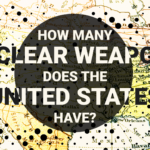The recession alone won’t stop nuclear power’s growth
By Fiona Simpson | July 9, 2009
Recently, the International Atomic Energy Agency (IAEA) projected that the global output of nuclear power will expand anywhere from 473 to 748 gigawatts by 2030. This expansion primarily will take place in countries with existing nuclear programs, but an additional 20 countries with no history of nuclear power are actively considering building reactors as well.
None of the IAEA’s projections, however, account for the financial crisis, which may negatively impact the appeal of nuclear energy. Clearly, investors that need credit to build new nuclear plants face a great deal more uncertainty and difficulty securing financing. Such a situation, on the surface, would indicate that nuclear power will be less attractive to investors. The downturn also may reduce electricity demand and thus, potentially, make the need for new power plants less urgent.
At the same time, prices for natural gas and oil have fallen from earlier highs, increasing their attractiveness as energy sources (although the price of each has increased recently). Additionally, nuclear power plants have significant “front-loaded” costs, requiring much more investment at the outset than fossil-fuel burning plants, even if nuclear plants may eventually be cheaper to run. In light of the ongoing credit crunch, investors in countries that don’t rely on state-owned enterprises may find the economic circumstances simply too difficult to justify an investment in nuclear power–especially if there’s reliable (and domestic) access to natural gas, coal, or oil. One also would expect private lenders to shy from nuclear projects–both because they have less money to lend and because of nuclear power’s history of cost overruns and delays. Finally, from the point of view of developing countries interested in nuclear power, multilateral development banks, such as the World Bank, tend to prohibit investment in new nuclear projects.
But that’s not the whole story. In some respects, the current economic climate actually may help nuclear power’s prospects. The credit crunch aside, countries that rely on wholly state-owned enterprises (e.g., India), or some privatized investors (e.g., Électricité de France, which transformed from a government-owned corporation to a limited-liability corporation in 2004), may find the costs of a nuclear power program, whether new or expanded, slightly reduced.
Here’s why: Until recently, cost estimates for new nuclear reactors had risen dramatically as booming world economies drove up the consumption and price of steel and concrete. The high front-end costs of building highly complex and commodity-intensive nuclear reactors meant that nuclear energy had a hard time competing against more affordable and simpler fossil-fuel burning plants. Now, as world economies are faltering, such commodities have decreased in price. Assuming that project funding already has been allocated (or is available), now actually may be a very sensible time to order a new nuclear plant. In addition, the long-lead times for nuclear power plant construction may allow such projects to be relatively unaffected by the current economic circumstances.
If an international expansion of nuclear energy does occur, there are concerns that it could increase the spread of proliferation-sensitive nuclear fuel-cycle technologies (e.g., uranium enrichment and reprocessing) necessary to make nuclear weapons. These fears have prompted renewed efforts to reduce that possibility by multilateralizing the nuclear fuel cycle; thus far, around a dozen proposals have been put forward, each of which describes a way to achieve this goal. They range from establishing an international fuel bank to eventually removing all new and existing enrichment and reprocessing facilities from individual state control.
Some states that are contemplating becoming providers of enrichment services may see such schemes as preferable to going it alone due to the lower risks associated with a multi-country approach. Others, however, are suspicious. Several member states that sit on the IAEA Board of Governors regard these proposals as infringing upon their rights under the Nuclear Non-Proliferation Treaty (NPT) to pursue peaceful nuclear power. Some countries also see these proposals as an attempt to limit the enrichment market to existing suppliers and to prevent new entrants from competing, in addition to their concern that LEU fuel wouldn’t be provided to them when needed.
At a June IAEA Board of Governors meeting, these concerns came to a head. During the meeting, developing country board members blocked a request by Director-General Mohamed ElBaradei to move forward with planning a multilateral nuclear fuel bank. The future of such proposals is now at the very least delayed, if not in doubt. But even if these proposals do languish for a time, they’re still vital if a nuclear expansion is to occur safely.
Two of the most developed proposals include one by the Nuclear Threat Initiative (NTI), which has received $100 million worth of pledges (in addition to the $50 million it received when first announced), and another, proposed by Russia, to set up a Russian-owned low-enriched uranium (LEU) fuel reserve of last resort for IAEA member states.
Other proposals also have received support. The German Multilateral Enrichment Sanctuary Project has been explored in several draft agreements, and a British-proposed nuclear fuel assurance proposal (formerly known as the “enrichment bond”) that seeks to facilitate multilateral nuclear power proposals through guaranteed export licenses has been publicly supported by Prime Minister Gordon Brown. On the other hand, the international side of the U.S. Global Nuclear Energy Partnership had its fiscal year 2009 budget zeroed out by Congress, and a separate U.S. proposal to use 17 tons of downblended highly enriched uranium for use in a last-resort fuel bank has received little interest, possibly due to a controversial clause that prohibits states that make use of the fuel from pursuing enrichment.
The International Uranium Enrichment Center (IUEC) at Angarsk, Russia, which is already in operation, is seen as the first step of a broader Russian initiative that would ensure the supply of LEU to new nuclear power states or those with nuclear power programs that don’t have access to the full nuclear fuel cycle. (The enrichment technology at the Angarsk facility is “black-boxed” to prevent the spread of technical know-how to non-enriching client states.) The IUEC is a commercial joint stock company, co-owned and co-managed by shareholders (with the eventual goal of 51 percent Russian ownership). Thus far, however, 90 percent is owned by the Rosatom-subsidiary Teckhsnabexport, with the remaining 10 percent owned by Kazatomprom, the Kazakh state-owned nuclear company. Armenia has pledged to buy a further 10-percent stake in the fuel bank. In addition, a draft agreement with Ukraine has been approved for it to obtain a 10-percent ownership stake in the project.
It may be hard for Russia to find more states to join the facility with the current recession. Yet, the motivations behind many of these states considering nuclear power (meeting domestic energy supply demands, supporting economic development, etc.) will reassert themselves when the world economy recovers and energy demand increases. Instead, long-term investment in Angarsk is more likely to be affected by the same skepticism that surrounds multilateral fuel bank initiatives, the belief that such proposals encroach upon the right of independent states, under Article IV of the NPT, to develop nuclear power for peaceful purposes. Potential client states also fear that the supply of nuclear fuel from such banks wouldn’t be adequately assured and would be at risk of a politically motivated cutoff. It has been suggested that such fears may be most keenly felt in Europe, where natural gas supplies were interrupted during a disagreement over pricing between Russia and Ukraine in 2007.
These “last resort” fuel bank proposals from NTI and Russia would be used in the event that both the existing free market for enriched uranium and alternate sources aren’t available. NTI’s proposal, which was announced in September 2006, would see any decision on release of the material taken by the IAEA director-general and based upon pre-agreed criteria having been met. Although the amount of money raised is sufficient to jump-start the NTI fuel bank, a sticking point is whether the IAEA’s Board of Governors would ever agree on a set of fuel-release criteria, as well as other features of such a bank. The recent failure of the board to even allow planning for a future bank is, to put it mildly, not a good sign.
In March, Russia announced that it would set aside a guaranteed reserve of 120 tons of LEU, which would be held at its Angarsk facility under IAEA control. The fuel would be available at the agency’s discretion to help member states that cannot access such fuel for political reasons. Russia would pay the storage costs and would sell the fuel to the IAEA based on a formula that takes into account spot prices at the time.
Some concerns have been raised about such fuel bank ideas, notably with respect to how the fuel rods would be fabricated in a timely fashion for an as-yet-undetermined reactor type under obviously unpredictable last-resort circumstances. Questions also have arisen regarding the fluctuating price of one reactor core reload of fuel and what might happen if the price of the reload exceeded the money pledged. In addition, political concerns linger about whether the fuel bank ultimately would be reliable in a politically charged future situation and even if the IAEA Board of Governors were to agree in advance on fuel-release criteria, would it allow the IAEA director-general to assess, without political interference, whether they’ve been met.
Obviously, these fears on the part of non-enriching states have little or nothing to do with the current economic climate. While the recession may slow spending on large projects, nuclear and otherwise, the success of multilateral approaches to the nuclear fuel cycle ultimately hinges on their political acceptability by all parties, rather than economics or any possible moderation of previous expectations for a global expansion of nuclear power.
Together, we make the world safer.
The Bulletin elevates expert voices above the noise. But as an independent nonprofit organization, our operations depend on the support of readers like you. Help us continue to deliver quality journalism that holds leaders accountable. Your support of our work at any level is important. In return, we promise our coverage will be understandable, influential, vigilant, solution-oriented, and fair-minded. Together we can make a difference.
Topics: Nuclear Energy, Nuclear Weapons, Opinion















